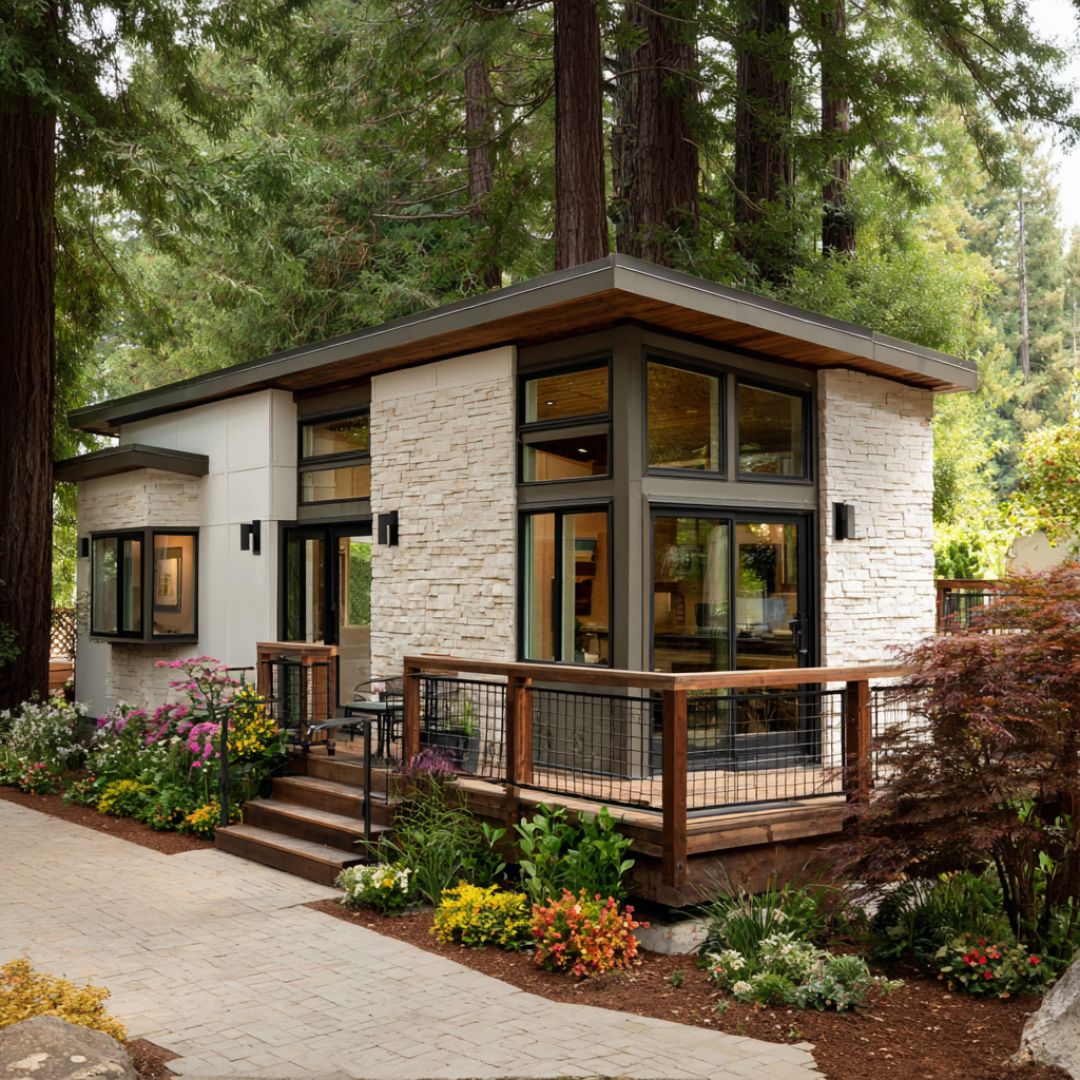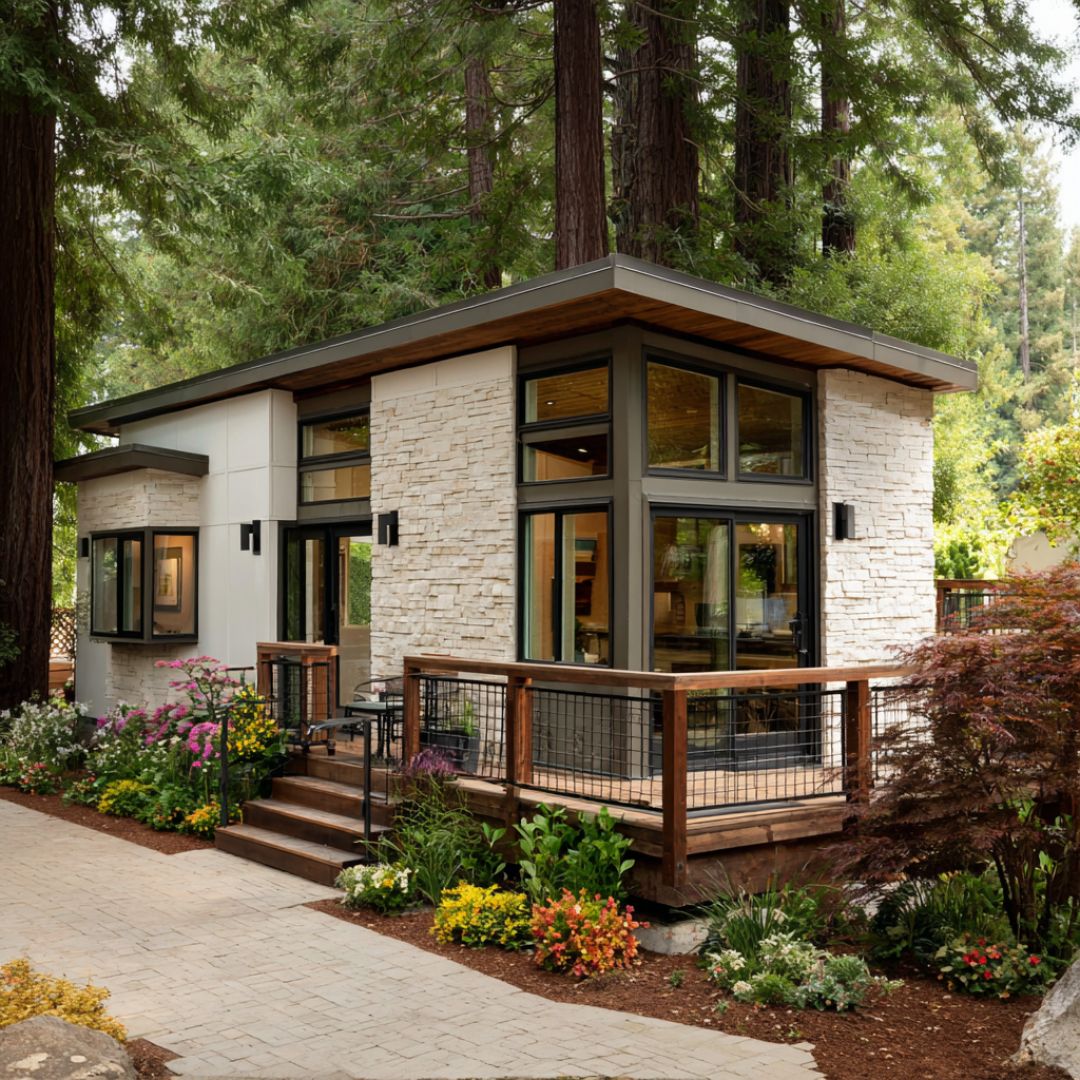Tucked away in a quiet grove of towering redwoods, this sleek modern cabin is almost invisible from the road. Its crisp lines and earthy tones blend effortlessly with the surrounding nature, as if it has always belonged here. From the outside, it looks like the perfect weekend escape — a peaceful retreat from the noise of the city. But step a little closer, and you’ll discover a story that makes this place far more than just a pretty getaway.

When James and Claire stumbled upon the property, it wasn’t the architectural beauty that caught their attention — it was the feeling. “It was as if the forest whispered to us,” Claire recalls. The land had been untouched for decades, a forgotten corner of a family estate. Where the cabin now stands, there was once nothing more than a clearing dotted with wildflowers. Most buyers passed it over, thinking it was too isolated, too wild. But for James and Claire, that was exactly the appeal.
Their vision was simple yet ambitious: build a home that didn’t just sit in the forest but became part of it. The design had to respect the landscape, preserving the towering trees and native plants while offering all the comfort of modern living. Working with a small team of eco-conscious architects, they crafted a structure that combines stone, glass, and wood in perfect harmony.
One of the most striking features is the floor-to-ceiling windows, allowing panoramic views of the forest canopy. In the early morning, sunlight filters through the branches, casting dancing shadows on the stone walls. In the evening, the interior glows warmly, a beacon of comfort against the cool forest air. The materials were carefully chosen: reclaimed wood for the deck, sustainably sourced stone for the walls, and energy-efficient glass to keep the interior temperature stable year-round.
But the real secret lies underground. Beneath the cabin is a compact but highly efficient geothermal heating and cooling system — an innovation that keeps the home comfortable in every season without relying on traditional energy sources. This hidden feature drastically reduces utility costs and leaves an almost invisible environmental footprint. “It’s our way of giving back to the land that gives us so much,” James explains.
Outside, the landscaping is intentionally minimal, allowing wildflowers, ferns, and moss to reclaim much of the space around the cabin. A small wooden path leads to a secluded reading nook just far enough from the main deck to feel like another world entirely. It’s here, surrounded by the scent of pine and the gentle rustle of leaves, that the couple spends most of their evenings, often without a single digital distraction.
The transformation of this land into a sustainable, modern retreat has become an inspiration for friends, neighbors, and even strangers online. Photos of the cabin have sparked conversations about sustainable design, off-grid living, and the possibility of building beauty without destroying nature.
James and Claire don’t see it as just a house — it’s a promise. A promise to live gently, to embrace the slow rhythm of the forest, and to remember that sometimes the most extraordinary places are the ones hidden in plain sight, waiting for someone to truly see them.

Leave a Reply